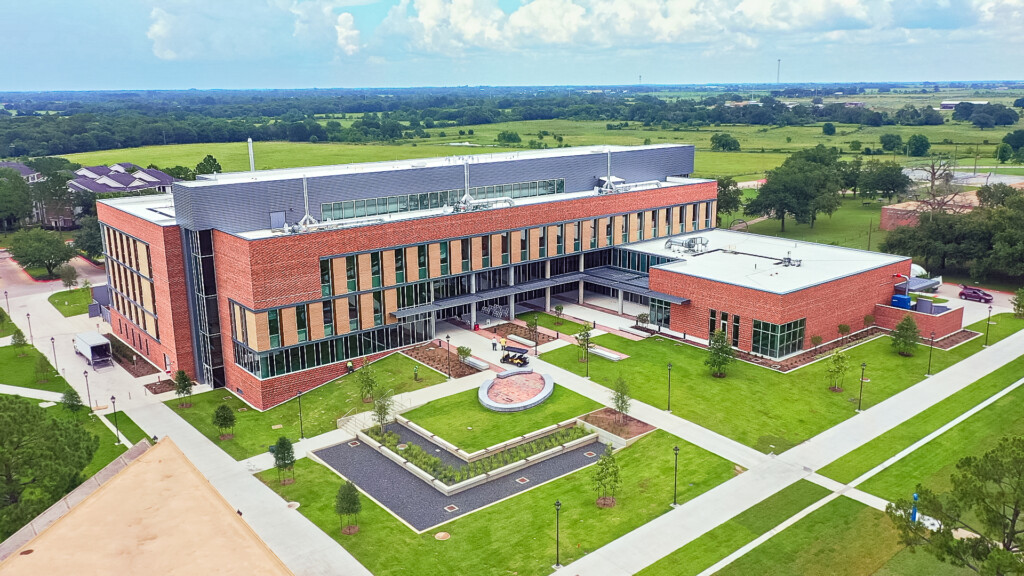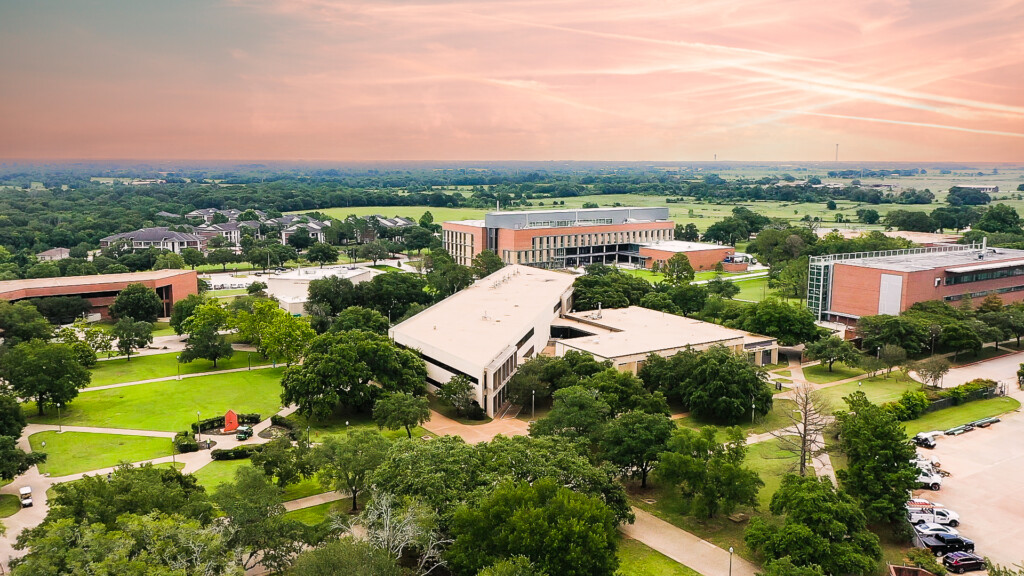PRAIRIE VIEW, Texas (June 19, 2023) – Two years after breaking ground, the sixth addition to Prairie View A&M University’s Roy G. Perry College of Engineering complex is ready to open its doors and offer new opportunities to students and faculty.
The University plans to hold a grand opening of its new $70 million Engineering Classroom and Research Building (ENCARB) this Thursday. ENCARB is situated at the intersection of E. E. O’Banion Street and D. W. Martin Street. Overlooking PVAMU’s enthralling farmlands, ENCARB was designed by Stantec Architecture and built by Vaughn Construction.
“The building provides state-of-the-art technical spaces that support hands-on learning and research activities that are critical to the field of engineering,” said Pamela Obiomon ‘93, Ph.D., dean of the Roy G. Perry College of Engineering. “It has spatial connections and openings to increase the connectivity of students and faculty, as well as create energy and opportunities for collaboration.”
Nearly two-thirds of ENCARB’s 106,000 square feet are dedicated to classroom instruction, with six generalized instructional classrooms and 14 specialized labs. The lab spaces support multidisciplinary research in space exploration, data analytics and artificial intelligence, robotics, structural analysis, 3-D manufacturing, and more.
The remaining third of the facility provides dedicated research lab space for faculty and graduate students. The building is also one of a few in the nation to have a microgravity drop tower for research in space-related conditions.
“Although the College of Engineering had a reputation of producing excellent engineers because of a good curriculum and great faculty, having a building like this [when I was a student] would have given students access to the latest in technology and high-quality resources resulting in a better-quality education,” Obiomon reflected. “The study spaces with modern furniture, inspiring collaborative learning spaces and open lighting adds a component to a student’s successful experience beyond grades and inspires them to achieve their best performance.”
ENCARB is the College’s first new facility in nearly two decades, a period in which enrollment has nearly doubled; the College is now home to over 1,100 students and more than 100 faculty members, researchers and staff.
“The Roy G. Perry College of Engineering Complex consists of five buildings varying in age,” said Obiomon. “Four of these buildings are over 40 years old. The most recent facility built was the Electrical Engineering building over 16 years ago.”
At the same time, the engineering field itself has expanded and evolved. The new building’s flexibility and modularity will allow PVAMU engineering programs to grow and change in the future.
“More buildings are planned,” said Obiomon. “As we grow our programs and increase our enrollment, we will need a large auditorium and more research space.”
“The number of buildings is driven by the number of students and the space required by research projects, seminars and lectures. While it is good to see investments continue, six buildings may be too few for a college that’s growing,” College namesake Roy G. Perry ’78 added.
Now in its 75th year, the Roy G. Perry College of Engineering at PVAMU has a well-established and rich legacy as a top producer of the nation’s most outstanding engineers, computer scientists, and technologists. With a focus on excellence, innovation, and practical application, the College has earned a reputation for producing well-prepared graduates ready to tackle real-world challenges and provide solutions in an ever-evolving engineering landscape.
“We are committed to increasing access to underserved students,” said Obiomon. “Our goal is to continue to deliver engineering excellence, increase enrollment and expand undergraduate, graduate and doctoral programs. In addition to degree expansion, we want to engage in cross-college interdisciplinary research and become more inclusive and collaborative with industry partners, universities and alumni.”
-PVAMU-


